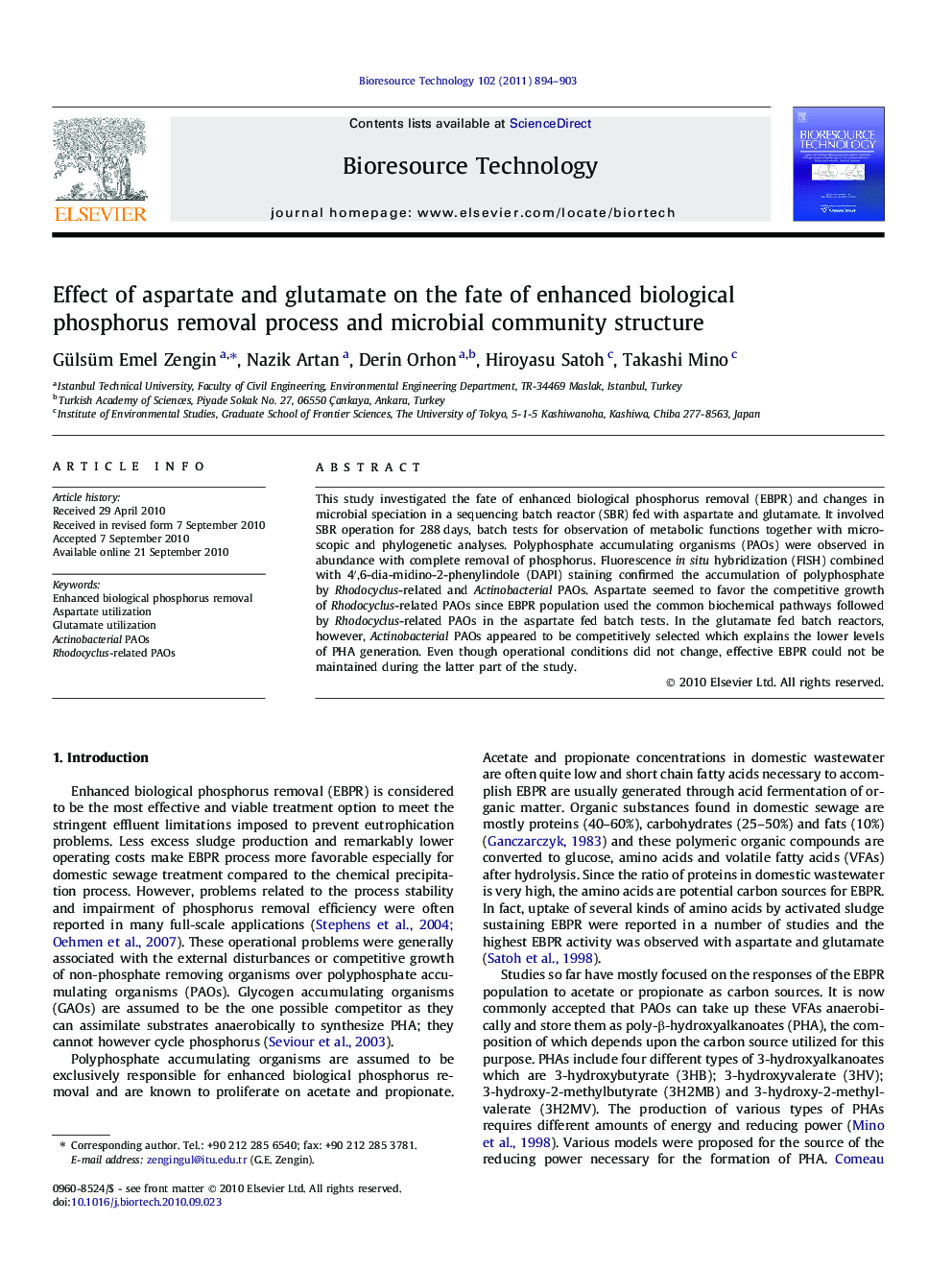| Article ID | Journal | Published Year | Pages | File Type |
|---|---|---|---|---|
| 682313 | Bioresource Technology | 2011 | 10 Pages |
This study investigated the fate of enhanced biological phosphorus removal (EBPR) and changes in microbial speciation in a sequencing batch reactor (SBR) fed with aspartate and glutamate. It involved SBR operation for 288 days, batch tests for observation of metabolic functions together with microscopic and phylogenetic analyses. Polyphosphate accumulating organisms (PAOs) were observed in abundance with complete removal of phosphorus. Fluorescence in situ hybridization (FISH) combined with 4′,6-dia-midino-2-phenylindole (DAPI) staining confirmed the accumulation of polyphosphate by Rhodocyclus-related and Actinobacterial PAOs. Aspartate seemed to favor the competitive growth of Rhodocyclus-related PAOs since EBPR population used the common biochemical pathways followed by Rhodocyclus-related PAOs in the aspartate fed batch tests. In the glutamate fed batch reactors, however, Actinobacterial PAOs appeared to be competitively selected which explains the lower levels of PHA generation. Even though operational conditions did not change, effective EBPR could not be maintained during the latter part of the study.
